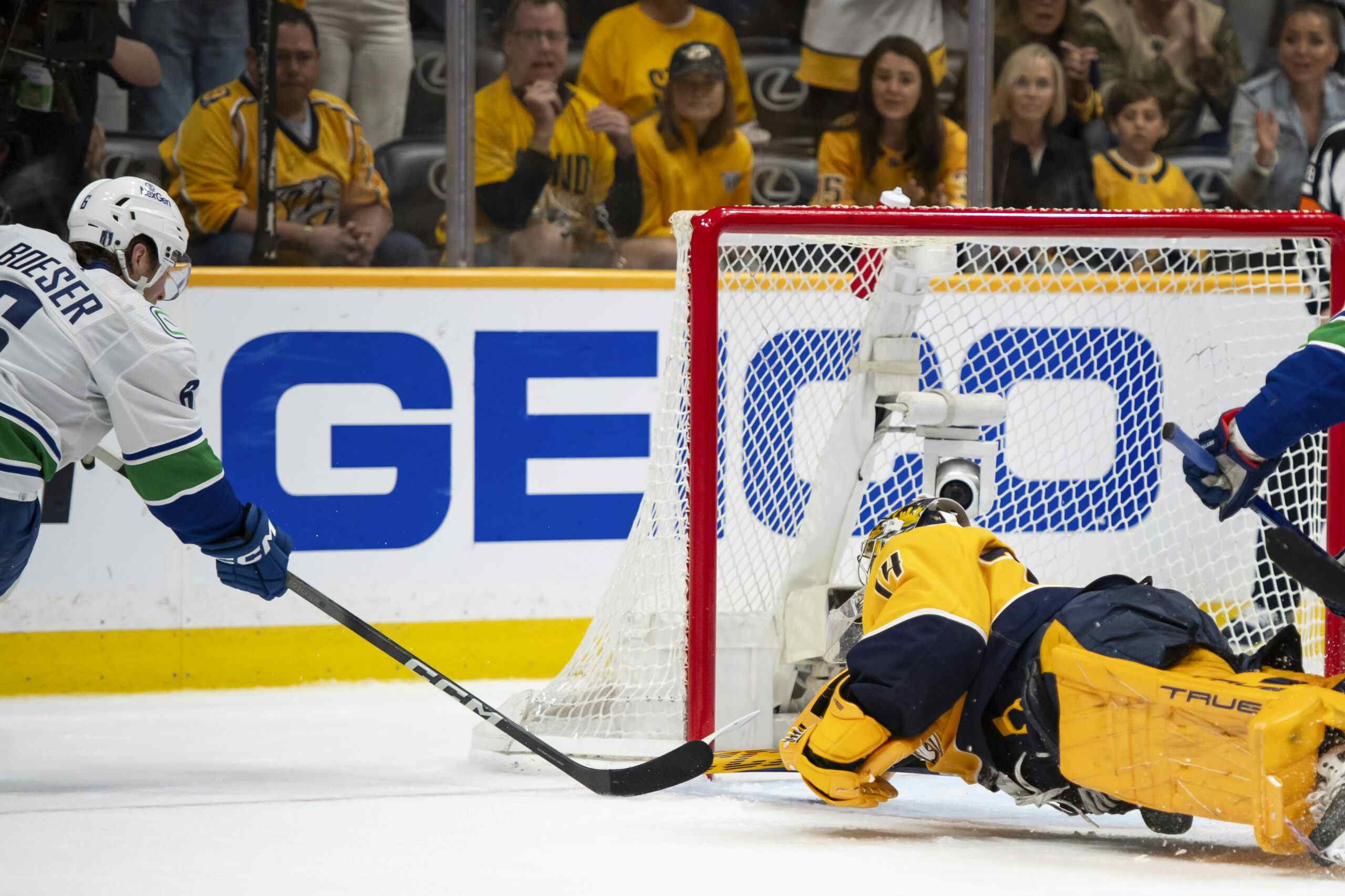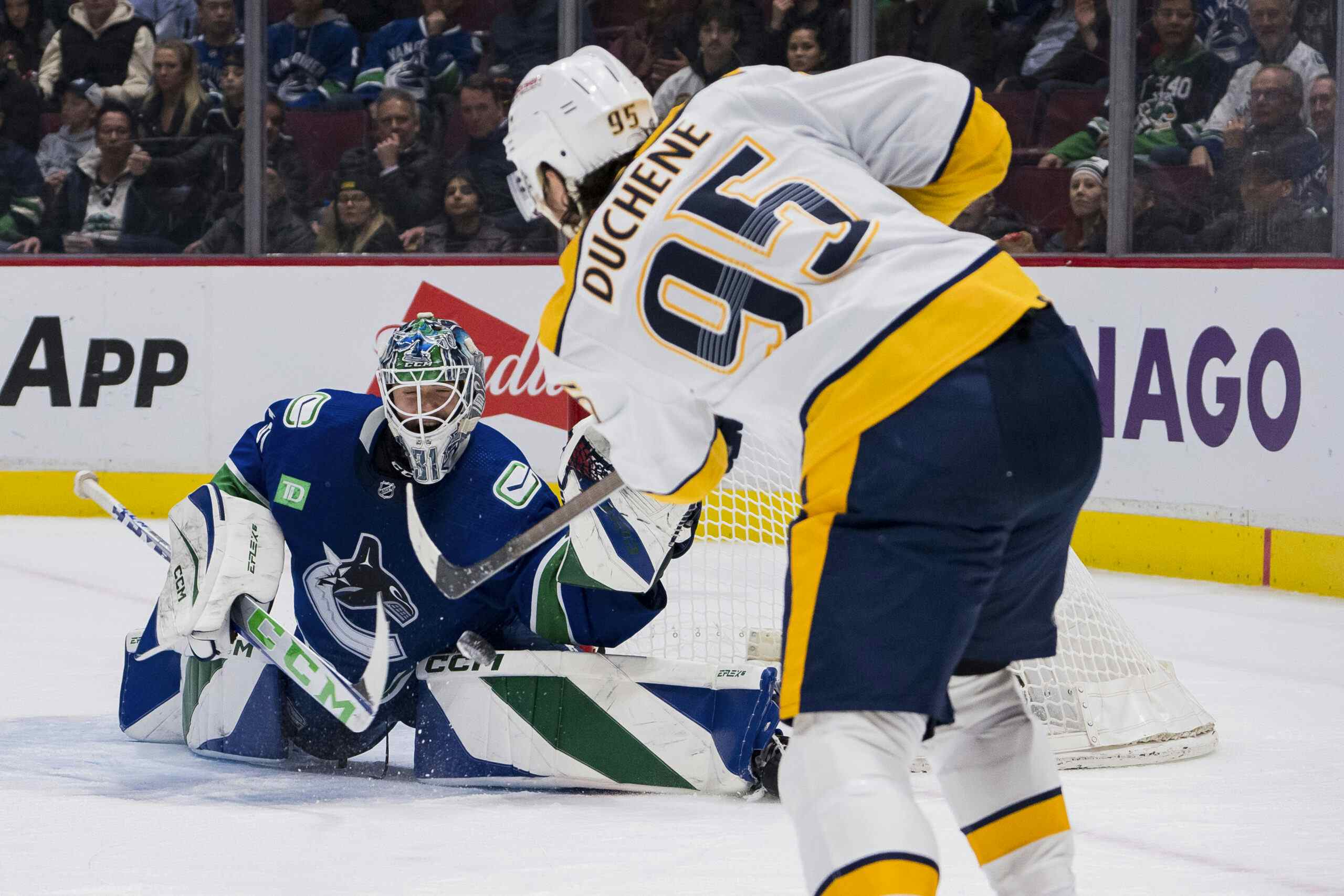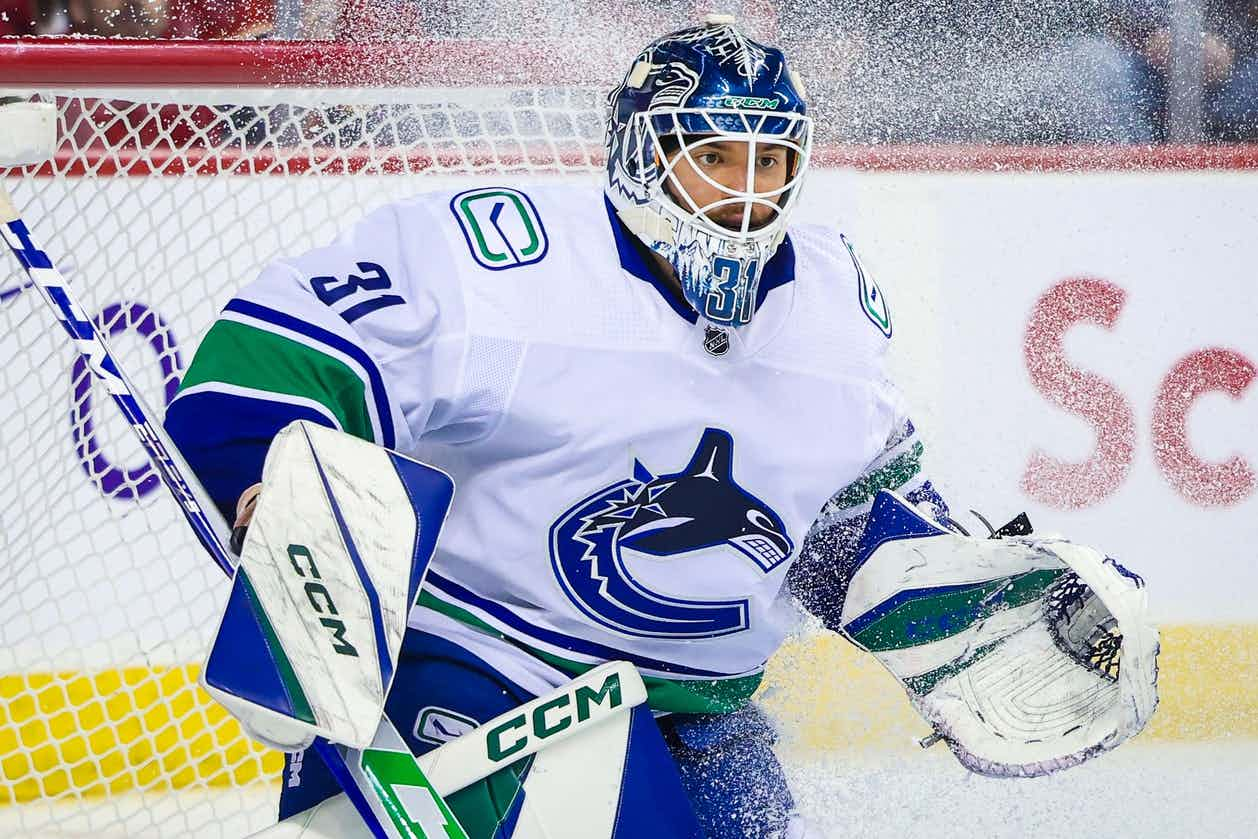2019 NHL Draft: Consolidated Industry Rankings for September 2018
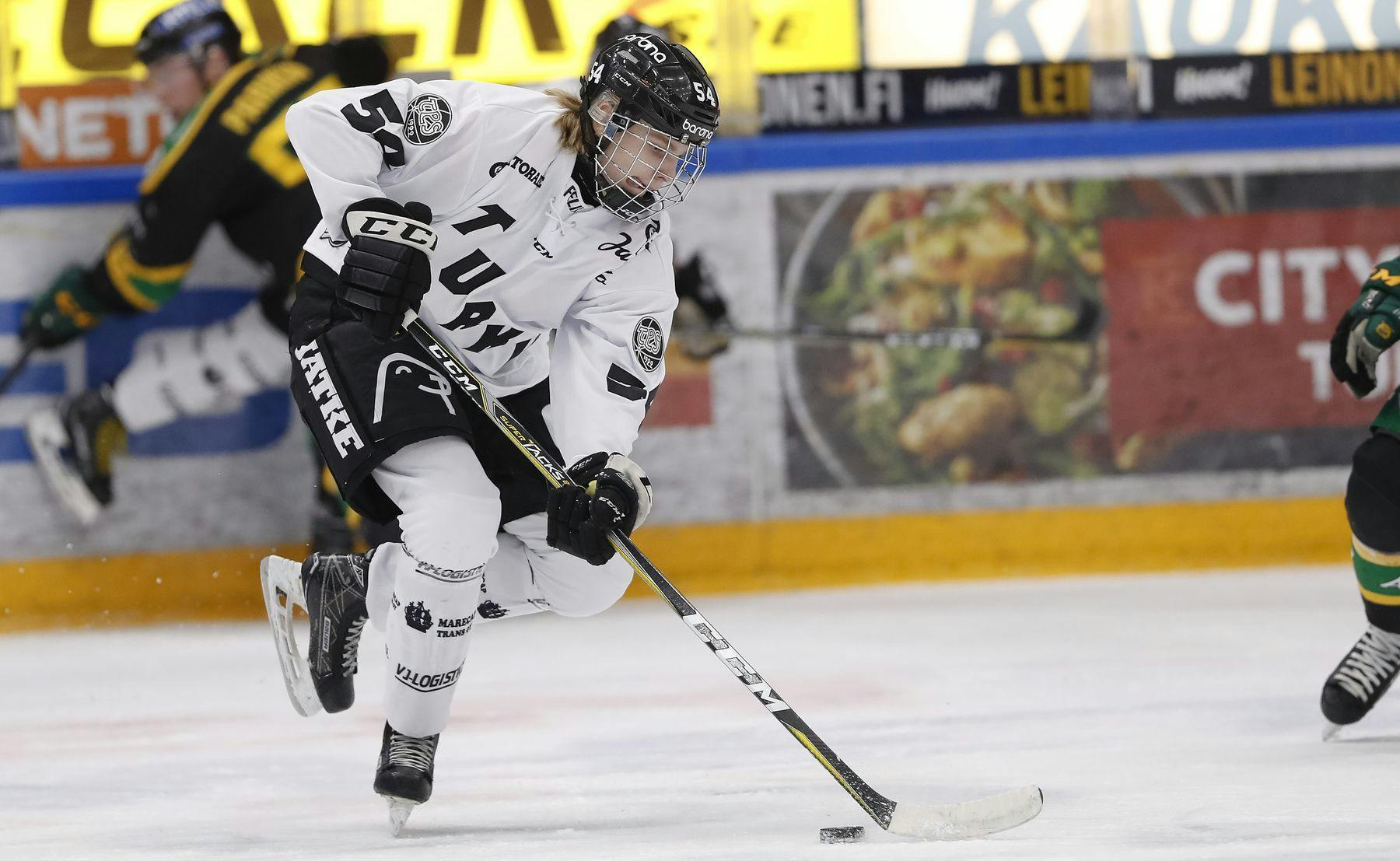
By Jeremy Davis
5 years agoWell, hello there.
The beauty of creating draft lists is that it’s an extremely subjective process. While the top of most lists have a general sense of similarity, there is also a large amount of diversity throughout that only becomes more pronounced as you move along, simply because no two people value any particular trait the exact same. You can come up with as many hot takes as you want, and there is no greater feeling that being able to claim years down the road that you were high on the latest surprise NHL star when no one else is.
However, in order to know just how hot your take is (and thus how much you can brag when it pans out), you need a baseline. Comparing against a single industry list doesn’t cut it, because of that aforementioned diversity. Some radio shows have been guilty of catering to the list specifically associated with their parent company, and, for example, might call a player taken at tenth overall a reach because that one list had him ranked 25th – even though he averaged a ranking of 12th and was sometimes listed in the top ten. These types of errors cause confusion in the market and make it more difficult to assess the general feeling around any given prospect.
That’s where this series of articles comes in. For each of the past couple seasons, I have been compiling various industry draft lists and consolidating them into one ranking that should theoretically indicate the average industry impression on how the latest crop of draft eligible prospects stack up against one another. This will be the first such list for the 2019 NHL Entry Draft, which take place in our own beautiful city of Vancouver in just nine short months from now.
Now, we’re still very early in the proceedings, and while some of the hardcore services (like HockeyProspect, ISS, and Future Considerations) had sizable 2019 lists out before the 2018 draft even begin, other places like Sportsnet, ESPN, the Athletic and McKeen’s haven’t even started putting out lists yet. I always like to begin these articles with a list of who’s involved, and so let’s take a gander at who got started nice and early this year.
| Service | TSN Industry Poll | TSN Craig’s List | Dobber Prospects | Future Considerations | Hockey Prospect | ISS Hockey |
| Author | Bob McKenzie | Craig Button | Cam Robinson | Staff | Staff | Staff |
| Date | September 17 | September 10 | August 25 | June 27 | June 7 | June 1 |
Six is admittedly small compared to the 10-12 that we normally deal with, but we have some pretty heavy hitters here in terms of scouting acumen, so we’ll roll with it. (I plan on including The Score’s list by Hannah Stuart next time around, but I didn’t get a chance to roll it into these rankings. Still, you should go ahead and read it anyway, to cover your bases.) Keep in mind also that when the next consolidated list comes out, some pretty big swings are bound to happen as services get into the mix for the first time. Then again, the first lists following the preliminary summer lists always contain some massive changes, so that should be expected anyway.
Let’s move right on to the consolidated list itself.
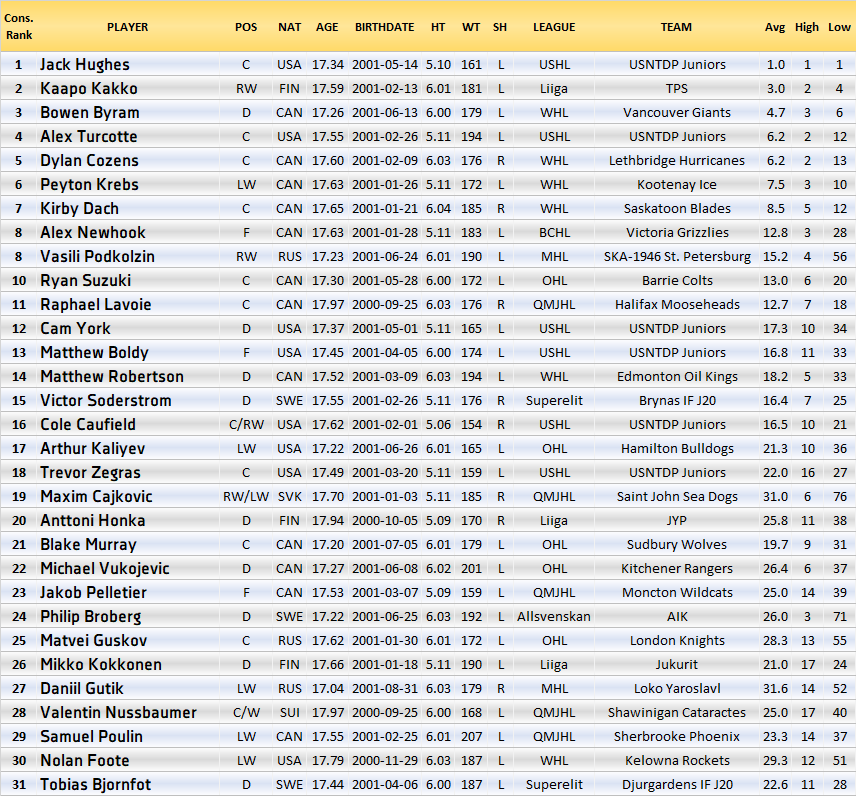
(Author’s Note: It’s been brought up that the average ranking on this chart causes some confusion, and understandably so. The explanation: the rankings are created on a points-based system (31 points for 1st place ranking down to 1 point for a 31st place ranking). Because not all services list all of players (or even the same number of players), their average rankings can sometimes be misleading. For example, one player might appear as 18th on list A and 21st on list B, while another player appears at 16th on list A but isn’t included at all on list B. This gives the second player a higher average, but only because he wasn’t even in the top 31 of list B.)
Top of the Class
Very much like last year, there is one player and one player alone who sits atop the rankings, and he will stay there all season (hottest of takes aside). Jack Hughes, younger brother of Canucks’ 2018 seventh overall pick Quinn Hughes, is the top player available this year and it isn’t particularly close. Hughes’ skating ability and puck skills are off the charts, giving him Patrick Kane-like elusiveness, which, combined with his supreme hockey IQ, makes him an absolutely dominant offensive threat. Undersized at 5-foot-10 and 165 pounds, Hughes still has the opportunity to put on plenty of muscle before he sees the NHL, which will only make his speed and acceleration more terrifying for opposing defences than it already is.
Failed to load video.
Very unlike last year, there is no consensus second overall prospect. Finnish winger Kaapo Kakko appears there most frequently, but centres Alex Turcotte and Dylan Cozens also make appearances in the two-hole on certain lists, with Kakko appearing as low as four on one ranking. A far cry from Andrei Svechnikov, who started and finished the season as the second best available player in 2018.
Kakko is an elite goal scoring talent with a lot of size and skill. Given the wealth of Canadian prospects in the top ten region, Kakko may be fighting off more contenders that he ought to be for the second spot (Canadian hockey people love their Canadian hockey players), but for me second overall is his spot to lose at this point. He’s off to a red hot start in the Finnish Liiga already, with six points in his first five games. It’s worth noting that Patrik Laine scored 0.72 points per game in the same league in his draft year, so we’ll have to keep a close eye on what kind of pace Kakko can sustain as the season moves along.
The third highest consolidated rank belongs to Vancouver Giants defenceman Bowen Byram. Anyone who’s made visits to the Langley Events Centre recently is familiar with this dynamic defender, as Byram was a noticeable presence even in his draft-minus-one campaign. Byram is an exceptional skater in every sense, from his acceleration to his lateral movement to his top speed. He has the creativity, awareness and shot to be a future power play quarterback at the NHL level.
Other players making frequent appearances in the top ten include Saskatoon Blades centre Kirby Dach, Kootenay Ice winger Peyton Krebs, Victoria Grizzlies speedster Alex Newhook, and Russian highlight reel Vasili Podkolzin, each with their own story to tell.
Failed to load video.
Further Notes
Riddle in the Middle
Centres are in high supply this year: even after we get past Hughes, Cozens, Dach and Turcotte, we find the likes of Ryan Suzuki and Raphael Lavoie loitering around the edges of the top ten. Ryan Suzuki is the younger brother of Nick Suzuki, who we were very high on in 2017 (he ended up going 13th overall to Vegas, since traded to Montreal in the Max Paccioretty deal). Ryan has more of that traditional centre size than Nick does, but his talent set is more well rounded and less pure skill. He processes the game at an extremely high level however, which should set him on the path to become a very good centre at the pro level.
Lavoie is the latest high end draft eligible prospect to grace the Halifax Mooseheads, following in the recent footsteps of Filip Zadina, Nico Hischier, Nikolaj Ehlers and Nathan MacKinnon (that market has been absolutely spoiled of late), though he’s admittedly a tier below all of those players. Lavoie is a big forward at 6-foot-4, 190+ pounds, and has played both centre and the wing, with some question as to which position he’ll stick with as he advances. Wherever he is, he’ll be a valuable offensive creator both as a shooter and a passer.
Failed to load video.
Trevor Zegras, Blake Murray, Matvei Guskov, and Valentin Nussbaumer round out the pivots in the consolidated first round. If your team is still trying to solve some sort of centre ice-based conundrum, then maybe the 2019 draft has some answers for you.
5-foot-6 is the new 6-foot-5
Maybe I’m exaggerating a little bit. Hockey men are always going to like their big tall centres, especially when it comes combined with speed and skill – Kirby Dach and Dylan Cozens come to mind. It’s hard to deny though that the NHL has grown more accepting of smaller players, and there certainly won’t be any qualms from general managers when it comes to taking 5-foot-10 Jack Hughes with the first overall pick. Alex Turcotte and Peyton Krebs, who also come in at just under six feet, won’t be second guessed either.
But what about 5-foot-6 Cole Caufield? The leagues relaxing expectations of size surely have some limit, but it’s hard to pinpoint where that might be. The fact that Caufield appears in the first round at all shows that the league and its prognosticators have come a long way, but him being roughly ten spots back of Alex Turcotte, despite having just about the same raw production on the same team, shows that height is still certainly part of the equation.
Speaking of Caufield and Turcotte’s production, if we peel back the layers, they don’t appear to be quite so similar after all. Caufield tallied 33 points in 32 games to Turcotte’s 32 in 31 during the National Team Development Program’s games against USHL competition only, but during all games with the U17 squad, Caufield picked up 63 points in 40 games to Turcotte’s 47 in 39. Furthermore, Caufield has a clear leg up in terms of primary points, with 32 of Caufield’s 33 points (USHL competition) being either goals or first assists, versus Turcotte’s 21 primary points. The trend persisted at both 5-on-5 and on the powerplay.
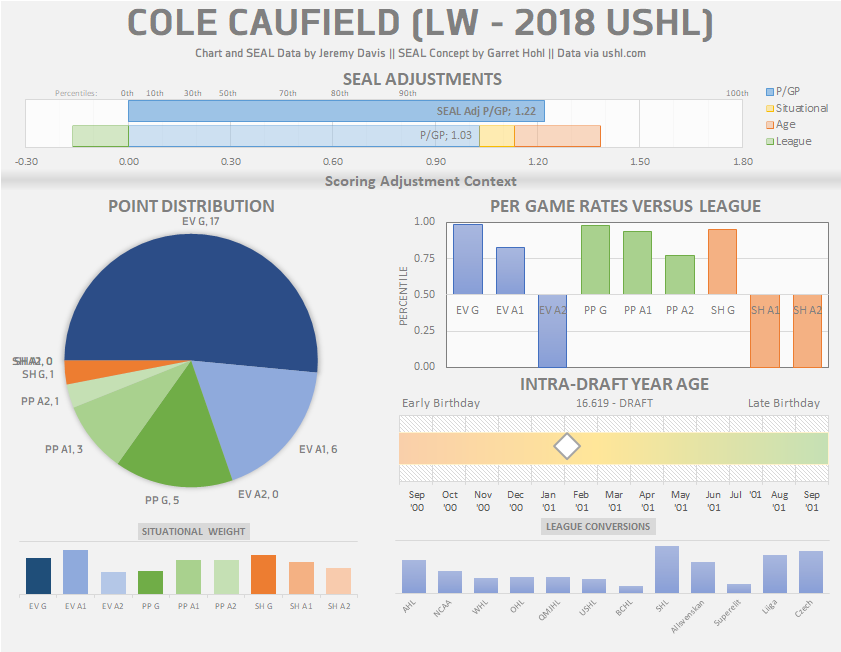
Those Scandinavian Defencemen
Every draft nowadays provides a wealth of European rearguards worthy of first round consideration. Obviously Rasmus Dahlin tops that list, but Swedes like Adam Boqvist (8th overall, 2018), Erik Brannstrom (15th overall, 2017), Timothy Liljegren (17th overall for some reason, 2017), and Jacob Larsson (27th overall, 2015), and Finns like Miro Heiskanen (3rd overall, 2017), Juuso Valimaki (16th overall, 2017), Olli Juolevi (5th overall, 2016), and Julius Honka (14th overall, 2014) have shown that we can rely on high end defensive talent from Scandinavia pretty much year after year.
One that pops out immediately, being the highest such defenceman on the above list, is Victor Soderstrom. Another small-ish (5-foot-11, 175 pounds) offensive defenceman, Soderstrom has drawn some comparisons to Adam Boqvist, albeit with a little less flash and a little more man-on-man defending. He processes the game at a high rate and usually makes quick, high percentages plays.
Two that catch my eye for another reason are Philip Broberg (Sweden) and Anttoni Honka (Finland, and younger brother of the aforementioned Julius Honka). The reason that I’m drawn to them is a case of their position on the various lists versus my personal perception.
Broberg sits at 24th on the consolidated list, but appears as high as 3rd on one of them – we have the TSN Craig’s List to thank for that. Craig Button absolutely loves him some Philip Broberg, clearly seeing an elite defenceman in the making. “He has exceptional skating ability and exceptional command of the game in every single regard,” Button wrote in his Early Top 5 Craig’s List back in August. “Everything about his game screams top pair defenceman, if not a No. 1 defenceman in the NHL.”
Button seems to be more or less alone in that opinion, as Broberg’s other listings include 7th (on fellow TSN analyst Bob McKenzie’s industry poll list), 23rd, 71st, as well as being left off a couple of lists all together. Broberg’s domestic stats don’t suggest an elite talent to me (he collected six goals and 15 points in 38 games in the top Swedish junior league, mostly after a mid-season team change), although the Superelit league is an admittedly volatile league to draw conclusions from. Broberg has started this season in the tier-2 professional Allsvenskan league, which will give a much clearer picture of where he’s currently at.
Honka on the other hand has the statistical profile of a lottery pick – he’s second among the players I’ve gathered data for in both pGPS and SEAL (trailing only Jack Hughes of course) after putting up half a point per game in the Finnish Liiga as a 17-year old, mostly at 5-on-5. Beyond that, he collected some gaudy on-ice numbers like a 78% goals-for percentage and a 62% Corsi-for percentage at evens, as well as putting 40 shots on net in just 20 games, while averaging just 11:32 in ice time. Add that to the fact that Honka quarterbacked the Finnish U20 power play at the World Junior showcase this past summer, and you’d think we’d be looking at a surefire top-5 selection.
Failed to load video.
So why is Honka ranked no higher than 11, sitting at an average of 20? For starters, he’s just 5-foot-9, but we’ve already established that the NHL has more or less taken the reigns off of drafting small players. Honka’s playing style hasn’t helped either, as he still plays in a manner befitting his size, rather than playing “bigger than he is”, as is the popular theme among successful small defenders.
“He can be easily outmuscled, and often just swats at the puck with his stick,” reads the report in the Future Considerations draft guide from this past summer. “Will need to learn positional defense, and how to better utilize his stick to separate pucks from opponents.”
Honka could learn a lot from the play of smaller defencemen like Troy Stecher or Quinn Hughes, who have learned to overcome their size deficiencies by using their brains and sticks to their advantage. If Honka can take strides in that area, I see no other reason why he shouldn’t be a top ten pick next June.
Tiers
We’ll finish this article off with a graph that I’ve come to enjoy while doing this series: the tiering of the prospects.
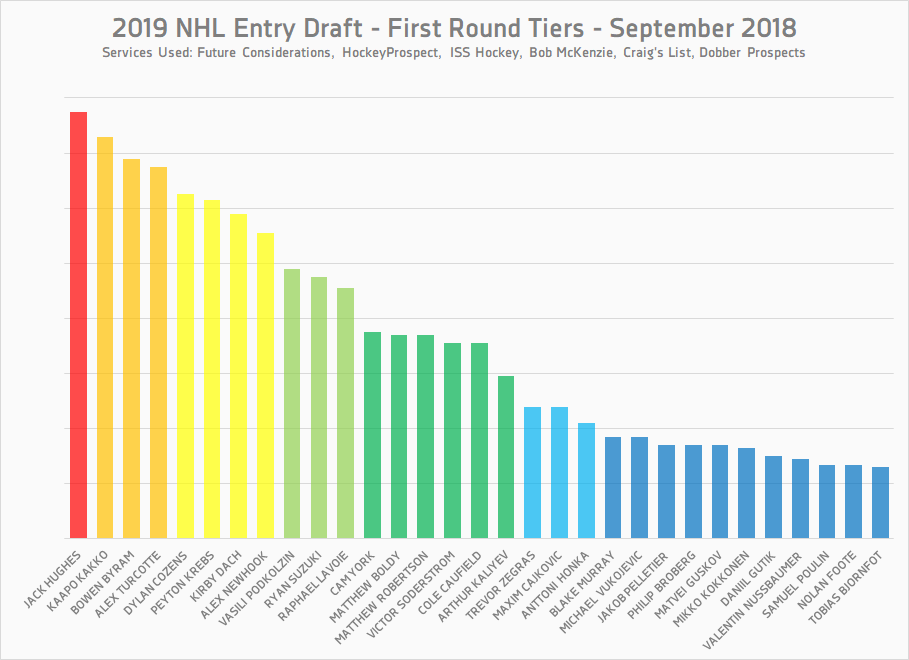
This section will get a little bit clearly as time goes on and more services are added to the database, but for now it provides a good starting point as to where the players in subgroups, as opposed to an ordered list.
I hope you’ve enjoyed this little 2019 draft kick off at Canucks Army, and that you’re looking forward to another year of fervent prospect following!
Recent articles from Jeremy Davis


